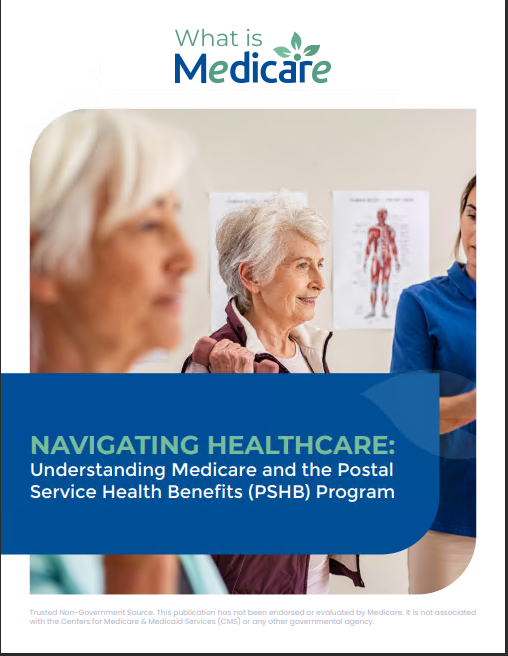Key Takeaways:
-
The new $2,000 out-of-pocket cap on Medicare Part D in 2025 eliminates the coverage gap, reducing high drug costs for beneficiaries.
-
Understanding the three coverage phases in Medicare Part D helps you plan your medication expenses and take full advantage of available savings.
Understanding the $2,000 Out-of-Pocket Cap in 2025
Medicare Part D has undergone a significant transformation in 2025, introducing a $2,000 out-of-pocket cap on prescription drug costs. This change eliminates the coverage gap (or “donut hole“), ensuring that once you spend $2,000 on covered medications, your plan covers the rest for the rest of the year.
For Medicare beneficiaries, this revamp means substantial cost savings, especially for those who rely on high-cost prescriptions. If you’re enrolled in a Part D plan, it’s essential to understand how this new cap affects your spending and what steps you can take to maximize your benefits.
How Medicare Part D Works in 2025
Medicare Part D now operates with three main coverage phases:
1. Deductible Phase
-
You pay 100% of your prescription costs until you reach your deductible (which may vary by plan but cannot exceed $590 in 2025).
2. Initial Coverage Phase
-
Once your deductible is met, you pay a copayment or coinsurance (depending on your plan) for your medications. Your plan covers the rest until your total drug costs reach $2,000 out of pocket.
3. Catastrophic Coverage Phase
-
After hitting the $2,000 cap, your plan covers 100% of your covered medications for the rest of the year. There are no additional copays or coinsurance costs beyond this point.
What About the Donut Hole?
Previously, Medicare Part D included a coverage gap where beneficiaries had to pay a higher percentage of their drug costs. In 2025, this gap no longer exists. Once you reach the $2,000 cap, you are automatically covered for the rest of the year.
How the New Part D Changes Benefit You
The $2,000 cap is a game-changer, but how does it directly benefit you? Here’s what you need to know:
-
Lower Prescription Costs: If you take expensive medications, you won’t have to worry about unexpected, skyrocketing costs once you hit the cap.
-
No More Coverage Gap: The elimination of the donut hole means a more predictable, streamlined cost structure throughout the year.
-
More Savings for Chronic Conditions: If you manage chronic conditions requiring costly prescriptions, you’ll likely see significant financial relief.
Maximizing Your Medicare Part D Coverage in 2025
To make the most of your Part D benefits, here are some key strategies:
1. Compare Plans During Open Enrollment
Medicare Open Enrollment runs from October 15 to December 7 each year. Use this period to compare plans and ensure your current plan still meets your needs.
2. Check Formulary Lists for Covered Medications
Each Part D plan has a formulary (list of covered drugs) that can change yearly. Verify that your prescriptions are still covered and look for plans offering the best pricing on your medications.
3. Take Advantage of the Medicare Prescription Payment Plan
Starting in 2025, you can opt into the Medicare Prescription Payment Plan, allowing you to spread out your medication costs in monthly installments rather than paying large sums at once.
4. Consider Generic and Preferred Drugs
Choosing generic or preferred brand-name drugs can help you stay under the cap for a longer period, reducing your out-of-pocket costs before hitting the $2,000 limit.
5. Review Pharmacy Networks
Some plans offer better pricing through preferred pharmacy networks. Using an in-network pharmacy can lead to lower out-of-pocket expenses.
6. Track Your Spending Throughout the Year
Knowing where you stand with your drug spending can help you plan and budget effectively. Many Medicare Part D plans provide online tools or customer service support to help track your expenses.
What Happens If You Reach the $2,000 Cap Early in the Year?
If you hit the $2,000 limit early, your Medicare Part D plan covers 100% of your covered prescription drug costs for the remainder of the year. This means that regardless of how many additional prescriptions you need, you won’t pay anything beyond the cap.
Planning for the Future: How This Change Affects Your Healthcare Budget
The introduction of this out-of-pocket cap means a more predictable medication budget for Medicare beneficiaries. However, it’s still essential to plan ahead:
-
Estimate Your Medication Costs: Review your expected prescription needs and calculate when you might reach the $2,000 limit.
-
Adjust Your Medicare Budget: Consider how much you’ll need to allocate for other healthcare expenses, such as doctor visits and supplemental insurance.
-
Look Into Extra Help Programs: If you need additional assistance affording medications, check if you qualify for Medicare’s Extra Help program or state assistance programs.
What If Your Medications Aren’t Covered?
If a medication you take is not covered under your Part D plan, you have options:
-
Request a Formulary Exception: You can ask your plan for an exception to cover a necessary medication.
-
Switch to a Covered Alternative: Your doctor may recommend a similar medication that is covered under your plan.
-
Appeal a Coverage Decision: If your request is denied, you can file an appeal to challenge the decision.
The Bottom Line on Medicare Part D in 2025
With the new $2,000 out-of-pocket cap, Medicare Part D is now more beneficial for those with high prescription drug costs. By understanding how these changes impact your coverage and implementing smart cost-saving strategies, you can get the most value from your plan.
Need help finding the best Medicare Part D plan for your situation? Get in touch with a licensed agent listed on this website to explore your options and make an informed decision.







